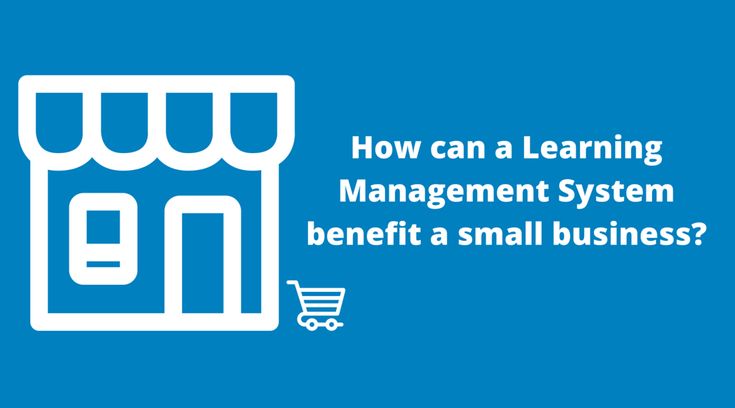Running a small business often feels like conducting an orchestra with missing instruments—you’re juggling customers, operations, finance, and people all at once. That’s where a strong business management system for small businesses comes in. Think of it as your conductor’s baton: helping you align everything so the business plays in harmony, not chaos.
In this post we’ll explore what a business management system (BMS) really means, the benefits it brings, how to choose one tailored for small business, and steps to make it work in your day-to-day operations. We’ll draw from current research, best practices, and actionable advice so you can pick and implement with confidence.
What is a business management system for a small business?
A business management system for a small business is a structured framework—often software-supported—that integrates and organizes key functions like operations, finance, customer relationships, human resources, inventory, and reporting. According to recent industry coverage, “A Business Management System is crucial for small businesses to streamline operations, enhance productivity, and improve overall efficiency.” (BuildOps)
Key characteristics typically include:
- A user-friendly interface so that non-technical owners/staff can adopt it quickly. (BuildOps)
- Integration capabilities, meaning the system speaks to other tools (accounting, CRM, e-commerce) instead of operating in isolation. (caflou.com)
- Customization and automation, so the system fits your unique business workflows and reduces manual tasks. (BuildOps)
- Reporting and analytics that give you clear visibility into your business performance—not just raw numbers but meaningful insights. (BuildOps)
In short, it’s the “central nervous system” for your small business.
Why do you need a business management system for a small business
If you’re still relying on spreadsheets, siloed tools, or manual processes, you’ll likely face these common issues:
- Mistakes, duplication, and “who’s responsible” confusion. (Systems And Teams)
- Poor visibility for decision-making (you’re flying blind).
- Bottlenecks in operations and delays in responding to customers or market changes.
- Difficulty scaling because the systems are ad hoc, not built for growth.
By contrast, a well-implemented business management system for a small business brings:
- Efficiency: Automating routine tasks frees up your time and your team’s. (caflou.com)
- Better decision making: With integrated data and dashboards, you’ll know what’s working and what’s not.
- Scalability: The system grows with you, reducing the need for wholesale tool changes.
- Sustainable operations: SOPs (standard operating procedures), workflows, and clear responsibilities mean you’re less dependent on “who remembers what”.
In fact, one piece highlights: “Small Business Systems help owners save time, reduce errors, and support business growth by organizing daily tasks and processes.” (Systems And Teams)
So, if you want to move from reactive to proactive, from chaos to clarity, a business management system for small businesses is worth serious consideration.
Key components of your business management system for a small business should include
When evaluating systems, focus on these core modules (you may not need all immediately, but you’ll want them eventually):
- Operations/workflow management: Project tracking, task assignments, status updates.
- Finance & accounting: Invoicing, spending tracking, basic bookkeeping, or integration with accounting software.
- Customer relationship management (CRM): Central customer database, tracking interactions, sales pipeline. For example: CRM tools help you “improve customer service… increase sales… more customer retention.” (oregonsbdc.org)
- Human resources/people management: Employee records, onboarding, time tracking, payroll interface.
- Inventory / supply-chain, if applicable: For product-based businesses – integrate order/inventory/fulfillment to avoid stockouts or excess.
- Reporting & analytics: Dashboards, custom reports, KPI tracking to move beyond gut feeling.
- Integration & automation: The ability to connect the system with other tools you use (email, spreadsheets, e-commerce, etc) and automate recurring tasks.
When you combine these, you have the structure for a robust business management system for a small business.
How to choose the right business management system for a small business
It’s tempting to pick the flashiest tool, but fit is more important. Here’s a step-by-step checklist to help:
Step 1: Define your needs
- What are your biggest pain points today? (E.g., lost invoices, missing sales leads, slow onboarding.)
- Which functions do you absolutely need right away vs. later?
- What systems are you currently using that you want to keep or replace?
Step 2: Set non-negotiables
- Must integrate with my accounting system.
- Must support X number of users.
- Must work on mobile/tablet if my team is remote.
- Must allow customization of workflows.
Step 3: Evaluate options
For each candidate system, ask:
- How steep is the learning curve? (User-friendliness matters)
- What integrations exist? (Will it speak with your other apps?)
- What is the cost (subscription, onboarding, training)?
- What customization and automation does it offer?
- What reporting & analytics dashboards are built in?
- What ongoing support/training is there?
Step 4: Compare features & cost
Here’s a simplified table to compare.
| System Name | Strengths | Weaknesses | Ideal For |
|---|---|---|---|
| System A | rich features, broad integrations | higher cost, steeper learning | businesses ready to scale |
| System B | very user-friendly, affordable | fewer advanced features, fewer integrations | small teams getting started |
| System C | specialized for product/inventory businesses | less suited to service businesses | product-based small businesses |
This table shows just how to compare – you’d fill in with real names and costs relevant to your market.
Step 5: Pilot and roll out
- Choose a small test group or segment (e.g., one team or one workflow) to pilot the system.
- Monitor adoption, user feedback, and whether the system actually solves the pain you identified.
- After piloting, roll out to the full team, provide training, and document workflows/SOPs.
Step 6: Monitor, adapt, and optimize
- Set KPIs (e.g., invoice turnaround time, closed deals per week, employee onboarding time) and monitor the system’s impact.
- Adapt workflows and refine the system as you learn what works and what doesn’t.
- Keep an eye on updates, new integrations, and scalability as your business grows.
Real-world example: business management system for a small business in action
Let’s say you run a small service business (say, a digital marketing agency). You currently use spreadsheets for client projects, email threads for leads, and QuickBooks for invoice‐tracking. You recognise pain points: some leads fall through the cracks, project statuses are unclear, and clients complain about billing confusion.
You decide to adopt a business management system for a small business. You pick a tool that offers CRM + project management + invoicing modules, integrates with QuickBooks, has mobile access, and workflow automation.
After pilot:
- Lead capture and tracking improve (CRM centralises new leads, auto-assigns follow-up tasks).
- Project statuses become visible to the whole team; you reduce status update meetings.
- Invoicing gets automated: once a project is marked “complete”, an invoice draft is generated and sent.
- You pull weekly dashboard reports showing open leads, project statuses, and cash flow.
You measure: lead-to-client conversion rate goes up, client satisfaction improves, the team spends less time chasing and following up, and more time delivering. That’s the practical value of a business management system for a small business.
Common pitfalls when adopting a business management system for a small business
- Choosing too complex a system too early: If your team is small and processes are simple, a heavy enterprise system will overwhelm.
- Under-training users: A system is only as good as its adoption. If your team doesn’t embrace it, you’ll end up with shadow tools again.
- Ignoring integration costs: The tool may need add-ons or custom connectors; hidden costs add up.
- Failing to document workflows: Tools support workflows, but you still need to define workflows. Without that, you’ll just recreate chaos inside a new tool.
- Not monitoring success metrics: If you don’t track whether the system improved things, you won’t know if it’s worth the investment.
A simplified feature comparison table: “Lightweight vs Comprehensive vs All-in-one” systems
| Approach | Description | Pros | Cons |
|---|---|---|---|
| Lightweight system | Focuses on 1-2 key functions (e.g., CRM only) | Fast setup, low cost, easier to train | Requires multiple tools if you need more functions |
| Comprehensive system | Includes several major functions (e.g., CRM + Invoicing + Project management) | Balanced, common workflows covered | May still require add-ons for some functions |
| All-in-one business management system | Combines multiple modules (CRM, Finance, HR, Supply Chain) | One system, data centralized, fewer integrations needed | Higher cost, more training required, may be overkill for very small teams |
Use this table to decide which level fits your business stage.
How much will a business management system for small business cost?
Costs vary widely depending on features, users, modules, and integrations. Key cost components:
- Subscription/licensing cost (per user/month or flat fee)
- Onboarding/training cost
- Integration/customization cost
- Ongoing support cost
As a rough benchmark: simpler tools may cost under $20-30/user/month, while full-blown “all-in-one” systems may run $50-100+ per user/month or more, especially with extra modules. The key is to match cost to value: if the system frees up time and gets you more revenue, the cost is justified.
Best practices for the successful deployment of your business management system for a small business
- Communicate clearly: Explain to your team why you’re implementing the system, what pain it addresses, and how it will help them.
- Start with a pilot: It’s safer and gives you feedback before full rollout.
- Train & support users: Make sure users have resources, cheat-sheets, and someone they can go to for questions.
- Document workflows and responsibilities: The system should reinforce a defined process, not replace undefined habits.
- Review and iterate: Set a review point (e.g., after 90 days) to look at metrics, user feedback, and adjust.
- Stay realistic: Systems don’t magically fix everything. They amplify good processes, so invest time in your process definition too.
Conclusion — take control with the right system for your business
When you adopt the right business management system for a small business, you’re not just buying software—you’re building the operating engine of your business. One that ensures team alignment, standardized workflows, reliable data, and fewer fires to put out.
Whether you’re a service business, product-based company, or a mixed model, the principles remain the same: identify your biggest pain points, choose a system that fits your needs and budget, pilot it, train your people, and measure the results.
Remember: the system will only deliver when your processes are designed and your team uses it consistently. With commitment, you’ll move from “keeping up” to “leading” in how you run your business. You’ll free up time, reduce stress, and create space to focus on what really matters—growing your business, delighting your customers, and scaling sustainably.


